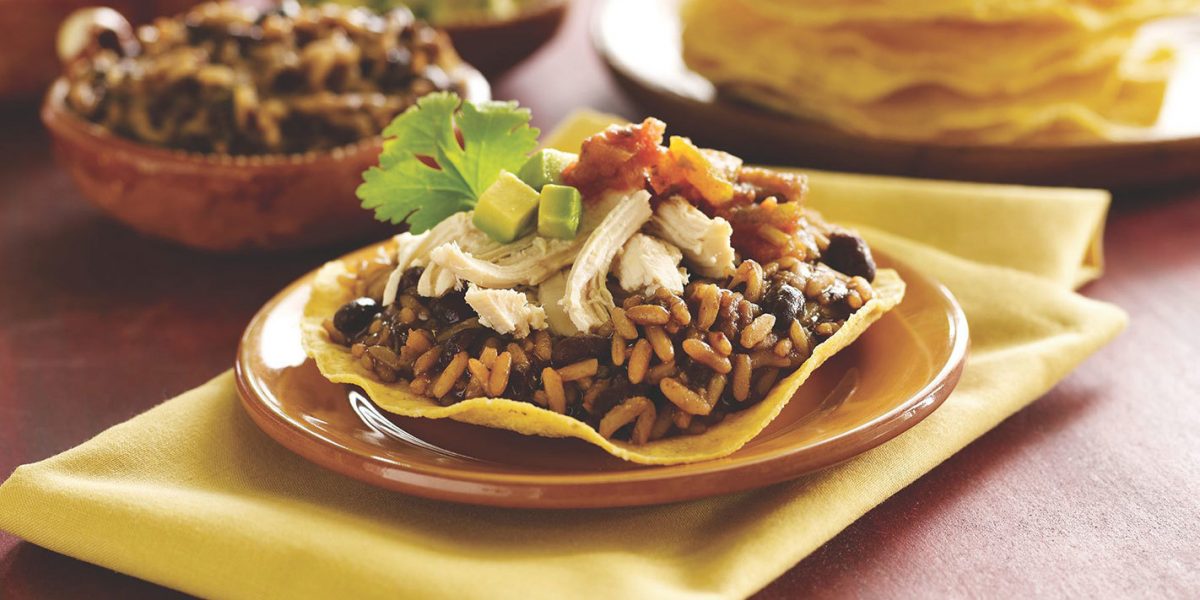Partner Content
There’s nothing better than curling up on the couch with a blanket and a bowl of rice on a cold day. The staple not only serves as a comfort food during the harsh Baltimore winter, but also as a base for some of the most popular culinary creations all over the world.
We partnered with New Orleans company Zatarain’s to speak with local chefs about how rice can be a hearty, flavorful component to many dishes.
Though we are living in a carb-phobic world, rice’s versatility can lend itself to many appetizing options, including some gluten-free and vegetarian recipes. Irena Stein, who owns Venezuelan restaurant Alma Cocina Latina in Canton, says the ingredient is a staple in her kitchen.
“We use corn, yucca, and rice in nearly every dish,” she says. “There’s a wide variety of vegetarian and gluten-free options, which some people think of as a second thought. But our vegetarian dishes are just as sexy as the others.”
Zatarain’s echoes Stein’s sentiments and offers many gluten-free products and recipes, including this tropical rice and chicken dish.
Rice can also be an incredible blank canvas for spicy flavors, often used in Creole and Southern cooking. But other spices, like those from various Southeastern Asian cultures, use the ingredient as an important foundation.
“The rice is like the cast in the background making the show go on,” says Steve Chu, who co-owns Ekiben in Fells Point, which uses about 1,000 pounds of rice a week in its Taiwanese-influenced dishes.
Rice acts as the perfect background note in this spicy Zatarain’s recipe for chicken curry accented with garlic, curry powder, raisins, and yogurt.
Rice also acts as a common through-line for many different cultural cuisines. Take Helmand Karzai, who owns four different restaurants in Baltimore that each represent a different culinary category. At his Afghani restaurant, The Helmand, he uses rice in his stews and Kabuli, and at his Spanish restaurant, Tapas Teatro, rice is the backbone, of course, for the signature paella.
“There’s a lot of cultures where rice is in the national identity of their cuisine,” Karzai said. “You have a little bit of meat, a little bit of sauce, and a lot of rice, and everything is flavored and it fed a lot of people inexpensively.”
For a home-cooked, one-pot version of paella that can feed the whole family, use Zatarain’s recipe for chicken paella that combines two different varieties of rice, Spanish chorizo, onions, peppers, and tomato.
Because of the ingredient’s simplicity and accessibility throughout history, rice is a consummate reminder of many people’s childhoods. Stein remembers being a picky eater as a young girl, but her favorite meal was plantains with rice.
“Rice always goes along with the plantains, and plantains are my favorite food,” Stein said. “When I was little, I was not very interested in food, but if you put a plantain on my plate, I’d eat my whole plate.”
For a similar Latin twist, try Zatarain’s recipe for tostadas, which combines black beans, shredded chicken, and rice.
Many restaurant owners like Chu and Ekiben, whose restaurant mixes rice with Thai chicken meatballs, coconut-peppercorn sauce, slaw, and fresh herbs in its Original Bowl, agree that rice represents family.
“A lot of memories are built around meals and conversations that you have at the dinner table,” Chu said. “And the constant part of those memories is rice.”
